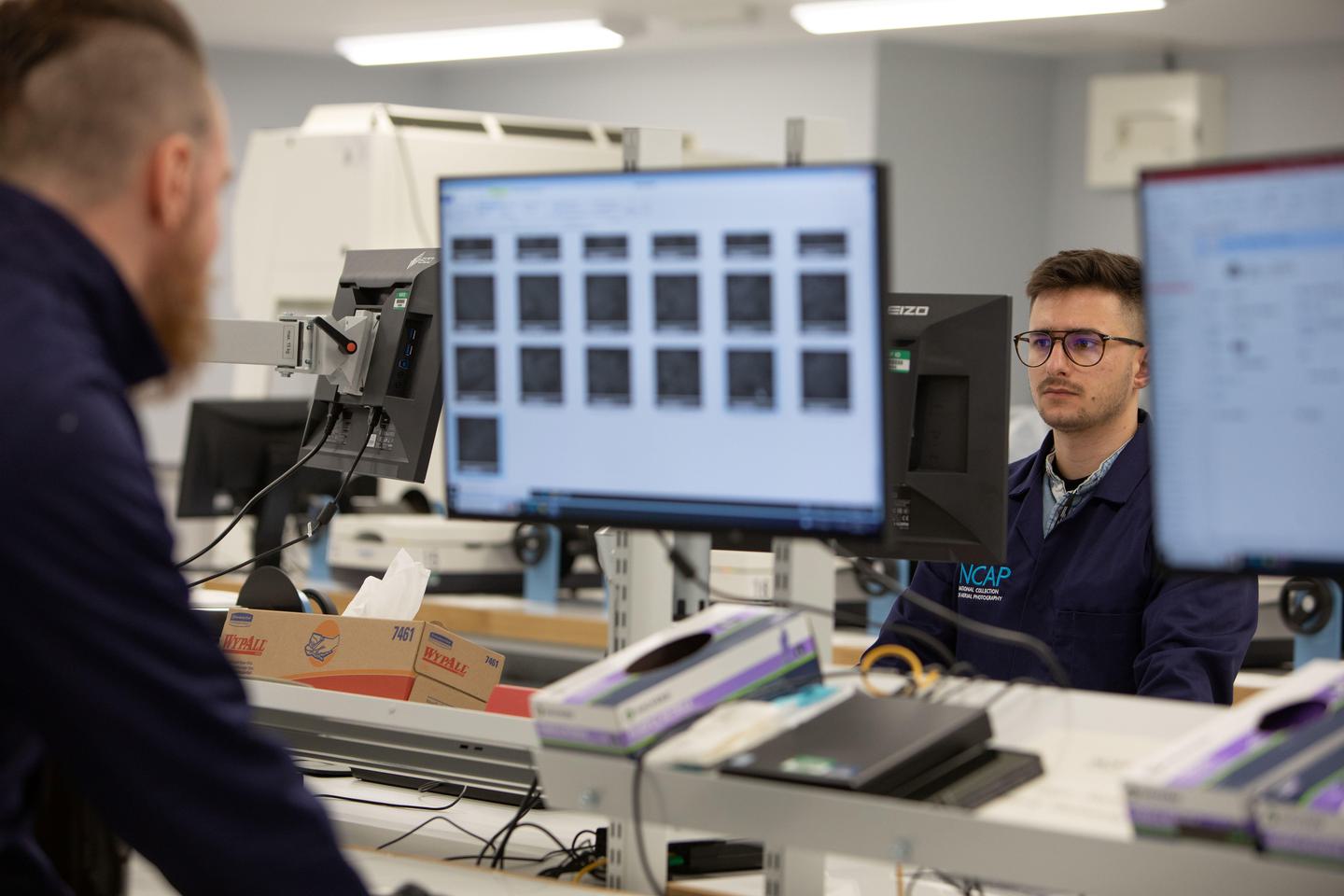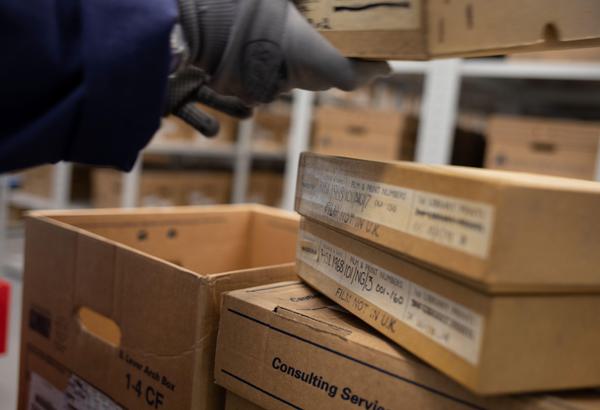
With tens of millions of images to keep track of, good data management is vital
Barcodes and barcode scanners are used to keep track of record movement
With tens of millions of images to keep track of, good data management is vital
Data Management
As one of the largest collections of aerial imagery in the world, the National Collection of Aerial Photography (NCAP) holds 30 million high-quality analogue images that record key moments in world history, and places around the globe.
image generation
As part of NCAP’s work digitising these tens-of-millions of images, large volumes of digital data are generated which need careful storage. NCAP is also committed to making these images accessible, which requires effective data retrieval processes. At full capacity, NCAP can generate terabytes (TB) of data per 24 hours through digitisation efforts. Storing this volume of data far exceeds NCAP’s server capacity, necessitating collaboration with external partners, notably the Edinburgh International Data Facility (EIDF).
Working in Partnership
The EIDF is an extensive collection of computational and data management services, funded by the UK and Scottish Governments to offer data-driven products, services, and research support. NCAP’s partnership with the EIDF grants access to a wealth of expertise. This collaboration bolsters capacity to process rapidly growing volumes of high-resolution digital imagery through the use of high-performance computing (HPC) systems. By providing faster access to millions of high-resolution historical aerial images of places around the world, the partnership will provide the global research community with access to a growing library of datasets.

The team at NCAP values any opportunity to enhance its processes through innovative technologies and finding new approaches to traditional ways of working. Partnering with the EIDF has been hugely rewarding. Promoting knowledge exchange and cross-sector development in geospatial intelligence and data management across industry, academia, and government cultivates a thriving research base. This data-driven innovation holds immense potential to benefit various sectors.
geographical information systems (GIS)
Although GIS is widely used for managing mapping data, traditional systems struggle to handle the vast amount of data generated by NCAP's global digital outputs. To address this challenge, the NCAP data management team collaborates with GIS, data processing, and artificial intelligence sectors to enhance existing systems and develop new ones.

Ease of Access
The digital assets created by NCAP's digitisation streams not only need to be stored for long-term preservation, but they also need to be easily accessed and made available as a public record. Smaller resolution copies, roughly the size of a postcard are made freely and openly available on the Air Photo Finder. The management of data for sales is equally important to many of NCAP’s everyday users. This requires a different set of processes. Given that image files stored at EIDF can be as large as 1GB per image file, they are impractical for traditional sharing methods. NCAP works with other partners to establish a more accessible dataflow set up to meet the needs of commercial customers.
The NCAP Data Management Team works actively with partners and stays updated on industry innovations to ensure consistent and efficient management of various storage and access strategies.

Born-Digital and Digital Collections
As research institutions transition from analogue photographic film, and to digital capture, NCAP is also embracing this shift by actively acquiring born-digital collections. Furthermore, through project partnerships with major international archives like the National Archives and Records Administration (NARA) in the United States, NCAP is helping partner organisations in making their digital collections of aerial photography accessible to the public.
NCAP has consistently enhanced photographic preservation and scanning processes. Likewise, it will strive to make further innovations in areas of data processing, artificial intelligence and digital asset management practices as collections expand.
IN THIS SECTION

Collections Care
Making sure photographic collections are cleaned and stable before any scanning has started underpins all work at NCAP.

Digital Imaging
Using the latest scanning technology, skilled technicians and robotic systems NCAP operates a highly productive digitisation facility.

Cataloguing and Access
All collections held by NCAP are open public record, once catalogued they are made available to the public.